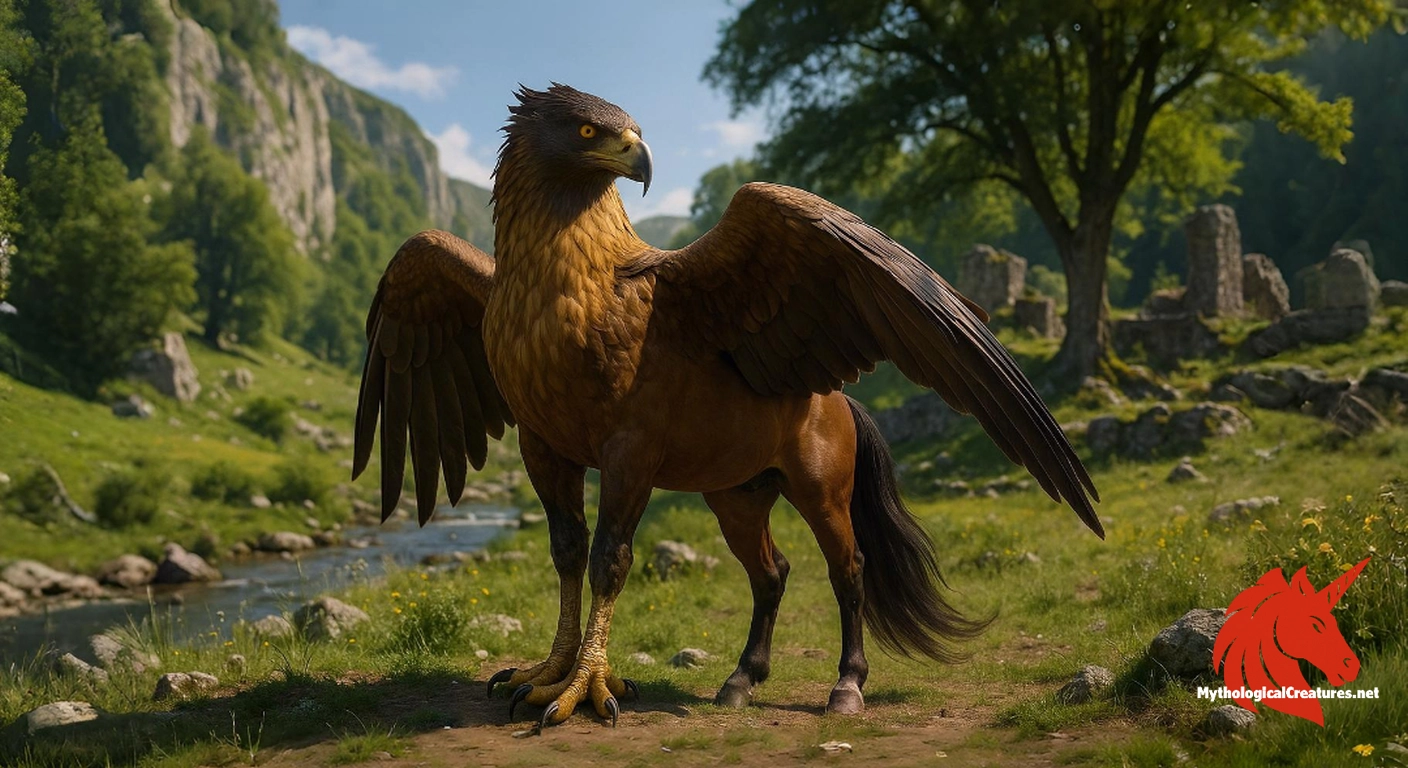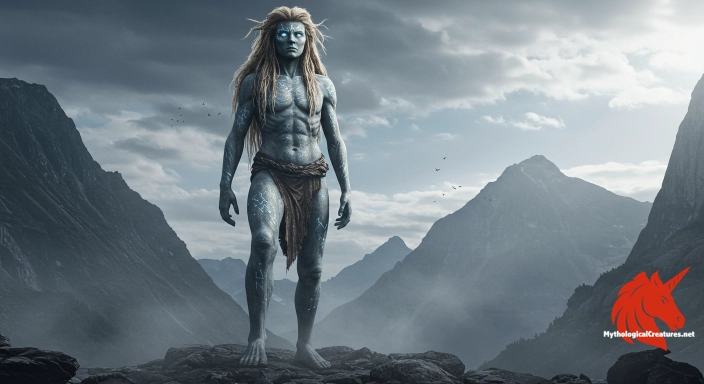Hippogriff: The hippogriff is a legendary hybrid creature with the head and wings of an eagle and the body of a horse.

Hippogriff
Hippogriff - Represents the union of opposites and the triumph of noble courage over impossibility
Origins & First Encounters
The Hippogriff is a mythical creature embodying a striking amalgamation of two powerful animal forms, combining the majesty of an eagle with the grace and strength of a horse. It emerged in literary imagination during the early 16th century, when Ludovico Ariosto introduced it in his epic poem Orlando Furioso. Its creation as the offspring of a mare and a griffin broke with conventional natural order, symbolising the fusion of disparate elements. This imaginative construct reflects the Renaissance spirit of redefining boundaries, marrying the ethereal with the corporeal. The creature’s form has long been admired for its ability to represent both celestial freedom and earthly dynamism. It has been embraced by cultures that celebrate heroic quests and chivalric romance. The Hippogriff’s enduring appeal lies in its representation of the impossible, a union that challenges the expected and inspires wonder. Rich in symbolism, it continues to serve as a metaphor for transcending limitations and uniting opposites. Today, the creature remains a fascinating emblem of myth and creativity, captivating modern audiences with its timeless allure.
Source Texts & Tale Variants
The literary origins of the Hippogriff can be traced back to the pages of Orlando Furioso, where it was depicted as the offspring of a mare and a griffin, thus establishing its unique heritage. This original narrative provided the groundwork for a host of story variants that followed over the centuries. Within the epic, the creature assumes a role as a steed for valiant characters such as Ruggiero and Astolfo, who embark on daring adventures. Different textual traditions have highlighted its unfathomable speed and the magical ability to traverse vast distances, even reaching fantastical realms like the Moon. Its early portrayal in the Renaissance remains the most authoritative source, yet later adaptations enriched its mythos with additional details and symbolic layers. Subsequent retellings in folklore and art have expanded the Hippogriff’s role beyond a mere mount, imbuing it with qualities of hope and transformation. Diverse narrative variations often stress its impossible origin, interweaving the themes of magic and chivalry. The evolution of its story through various literary and artistic mediums reflects a broader cultural fascination with hybrid creatures. Consequently, the Hippogriff has become a multilayered symbol whose narrative depth continues to inspire creative reinterpretation.
Form & Powers
The Hippogriff is distinguished by its intriguing dual anatomy that amalgamates features of both an eagle and a horse into one majestic form. Its head, marked by the sharp, curved beak and intense, piercing eyes of an eagle, conveys an unmistakable sense of regal predatory prowess. Expansive wings, richly detailed with layered feathers, extend from its powerful shoulders, enabling it to soar with both grace and vigour. The creature’s body seamlessly transitions into that of a robust horse, complete with muscular limbs that exemplify speed and endurance. This combination creates a striking contrast between the delicate structure of its upper avian form and the sturdy build of its equine rear. Many artistic depictions emphasise the majestic size of the Hippogriff, often portraying it as larger than a typical horse with an impressive wingspan. The interplay between feathers and fur not only underlines the creature’s hybrid nature but also enhances its mystical allure. Fine details such as subtle markings and embellishments are frequently added by artists to underscore its nobility and otherworldly origin. Overall, the Hippogriff’s physical presentation is a carefully balanced symphony of beauty, power, and the fantastical.
Regional Faces
The depiction of the Hippogriff varies notably across different cultural settings, with each region contributing its own nuances to the creature’s mythos. In its Italian origins, the creature retains a strong connection to the ideals of chivalry and the Renaissance, echoing the imaginative spirit of Ariosto’s verse. Mediterranean interpretations often emphasise its role as a noble steed, a symbol of high adventure and heroic questing. In contrast, some Northern European traditions have woven darker, more enigmatic attributes into its narrative, merging it with local legends of the supernatural. Regional artistic traditions sometimes adjust its visual features, altering its colour palette or accentuating certain traits to align with local symbolism. These local variations can even extend to its size and the manner in which its hybrid nature is depicted, reflecting distinct cultural perspectives on the merging of the aerial with the terrestrial. Such adaptations highlight the flexibility of myth and the way stories evolve to mirror regional values. The Hippogriff thus becomes a canvas onto which different cultures project their ideals and imaginative aspirations. This regional divergence reinforces the creature’s status as a truly international symbol of the fantastical.
Cultural Parallels
The Hippogriff occupies a unique position among mythological hybrids, often drawing intriguing comparisons with other legendary creatures. It shares similarities with the griffin, inheriting the eagle’s noble visage while diverging through the addition of an equine lower body. There is also a thematic resonance with Pegasus, particularly in its capacity to serve as a mount for heroic quests, symbolising freedom and the bridging of earthly and divine realms. Such hybrid creatures are common in mythologies around the world, each blending elements of nature to convey profound symbolic meanings. Unlike some monsters emerging from the union of disparate animals, the Hippogriff is imbued with an inherent nobility and grace. This duality echoes similar constructs where opposing forces merge to create a balanced whole, a recurrent motif in mythic narratives. Its presence in heraldry further underscores its role as a symbol of strength, courage, and the harmonious union of different elements. Comparative analysis reveals that the Hippogriff not only reflects its own distinct lore but also participates in a broader tapestry of cross-cultural myth-making that celebrates the extraordinary. In this light, its hybrid nature continues to fascinate, serving as a point of convergence across various mythological traditions.
Legacy & Modern Evolution
The legacy of the Hippogriff is a testament to its enduring appeal and adaptability through the ages. Its origin in 16th-century literature has paved the way for a rich evolution in both narrative and artistic expression, allowing the creature to transform with shifting cultural landscapes. The imaginative engravings of Gustave Doré in the 19th century were instrumental in cementing its image as an emblem of fantastical adventure and chivalric spirit. Modern renditions in fantasy novels, films, and games have revived its myth, integrating it seamlessly into contemporary cultural narratives. This transition reflects an ongoing fascination with creatures that challenge the boundaries of nature, combining elements of both the terrestrial and the celestial. Contemporary artists and storytellers often reinterpret the Hippogriff to assimilate modern values such as freedom, transformation, and the celebration of the extraordinary. The evolution of its imagery underscores a broader trend in which classical myths are renewed and reimagined for new generations. With digital illustrations and cinematic portrayals enhancing its majestic form, the Hippogriff continues to inspire awe and creativity. Ultimately, its historical evolution and modern legacy affirm the timeless nature of myth and its capacity to evoke wonder across centuries.
Interesting Fact
The hippogriff uniquely symbolizes the merging of contradictory elements, a mythical invention that defies natural laws to inspire generations.
Quick Creature Info
Features:
Associations:
Our Mythic Legendary Rating:

Also Sometimes Known As:
Habitat:
Supernatural Powers:
Physical Attributes:
Abilities:
Behavior:
Lore:
References
Discover Another Mythical Legend You May Not Have Heard Of?
Uncover the mysteries of ancient folklore and expand your knowledge of legendary beings from cultures around the world.
Dare to Meet the Gríðr....
Mythical Disclaimer: The images and data on this site are derived from various historical and literary sources, but we have found that many myths often have multiple versions and interpretations across references, sometimes contradictory. As a result, these creature depictions are artistic interpretations—imaginative blends of folklore, legend, and a dash of AI guesswork. Because creature descriptions vary widely, our illustrations and accompanying information represent our best effort to honor mythology while bridging creative gaps. Enjoy these interpretations—just remember, we've done our best to respect the stories and validate available data, but in the realm of mythology, details often shift, imagination leads the way, and nothing is ever set in stone!
Curated by the Mythological Creatures Team (rev. May 2025)
